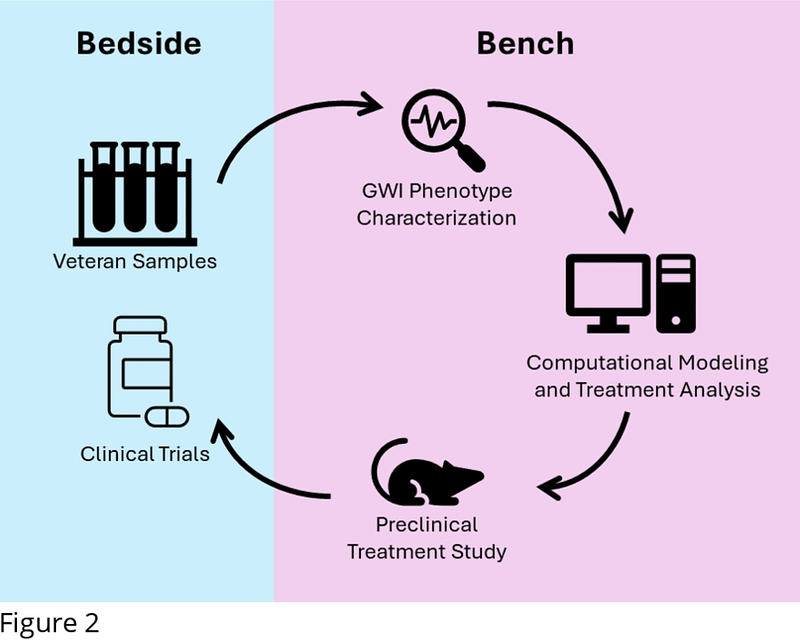Computational modeling-directed combination treatment with etanercept and mifepristone mitigates neuroinflammation in a mouse model of Gulf War Illness.

Computational modeling-directed combination treatment with etanercept and mifepristone mitigates neuroinflammation in a mouse model of Gulf War Illness.
Kelly, K. A.; Felton, C. M.; Billig, B. K.; Yilmaz, A. A.; OCallaghan, J. P.; Craddock, T. J. A.; Broderick, G.; Klimas, N.; Michalovicz, L. T.
AbstractGulf War Illness is a chronic multi-symptom disorder experienced by over 30% of veterans from the 1990-1991 Gulf War and is increasingly recognized to be driven by underlying persistent neuroinflammation resulting from chemical and physiological exposures experienced during deployment. Despite significant advances in identifying Gulf War-relevant exposures and underlying pathobiology, effective treatment strategies for Gulf War Illness are still largely lacking. Many studies that have evaluated potential therapies for Gulf War Illness have primarily focused on a single treatment. However, through a mechanistically informed computational evaluation of blood biomarkers and gene expression in veterans with Gulf War Illness, we identified that a combination of anti-inflammatory and anti-glucocorticoid treatment may prove effective in treating Gulf War Illness. Here, we have evaluated combined treatment with the anti-TNF drug, etanercept, and anti-glucocorticoid, mifepristone, in an established long-term mouse model of Gulf War Illness of combined physiological stress and nerve agent exposure. Supporting results from the computational modeling of this treatment, we found that this drug combination significantly alleviates the underlying neuroinflammation associated with Gulf War Illness. The fusion of computational and in vivo preclinical treatment evaluation may provide a highly useful and translationally relevant means by which to identify successful treatment paradigms for Gulf War Illness.